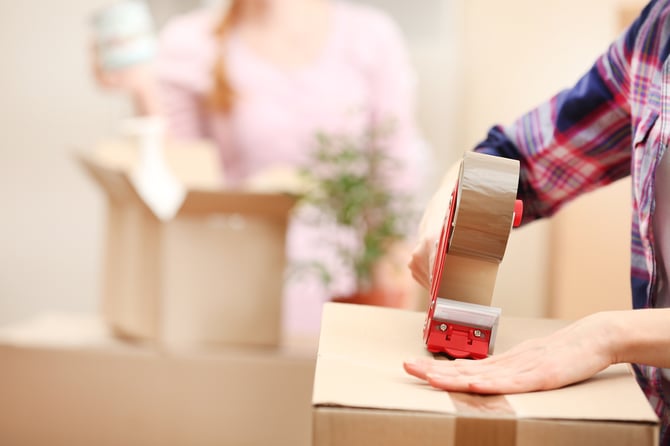
This is a comprehensive guide on how to pack boxes for shipping.
Part 1 will cover Step 1 (Assess your packing needs) and Step 2 (Select the right box).
Part 2 will discuss Step 3 (Internal packaging) and Step 4 (Sealing your box).
Step 1 - Assess your packing needs

Are you packing for storage? Packing for a move? Packing for shipping?
These are important considerations in determining the way you pack a box. Depending on the purpose of packing, boxes will be handled differently and exposed to different levels of risk.
- Low risk: Packing for self-storage
You have complete control of how boxes are handled and how they are placed.
You only need to ensure that the box can withstand the weight of whatever may be stored on top of it. Don’t leave any empty space for the box to collapse.
- Medium risk: Packing for a move
You have relative control of the handling of your boxes. You’ll either be using a removalist or doing the moving yourself, so this means there is minimal handling.
Your boxes will typically be placed on a truck and driven directly to the new address where they’ll be carefully unloaded.
- Higher risk: Packing for shipping
You will have almost no control of how your boxes are handled. Your boxes will be loaded and unloaded in different trucks multiple times, and may be sorted at one or more depots by hand or by an automated conveyor belt system. No matter which carrier or shipping service you use, it is an undeniable fact that the more often your box is handled or moved, the greater the opportunity for damage to occur.
The quality of packing is the only thing that can mitigate this risk, so leave nothing to chance when packing for shipping.
In this guide, we will be focussing on packing for shipping, because we want to give you the best expert packing advice so your boxes can withstand just about anything!
Step 2 - Select the right box

Not all boxes are created equal. They come in different sizes, materials and strengths. For many types of goods, the original retail box is designed primarily to look good on a display shelf and is not adequate for shipping the item on its own. Whatever you’re packing, make sure you select an appropriately strong box. Here are our tips on how to make the right box choice every time.
Box Size:
When choosing a box, size matters. You must consider what is going in the box. Is it heavy? Are you packing multiple items or items of different shapes and sizes?
When choosing a box size, take note that you should be allowing for at least a 5cm of cushioning between the items and the walls of the box.
High value goods and fragile items require more internal cushioning and external protection.
As a general rule, you should avoid packing heavy items into big boxes. Once your boxes exceeds 30kgs in weight, it starts becoming too heavy to safely pick up, and the bigger the box, the harder it can become to handle. For large, heavy items, palletising may be the best solution.
Another factor to bear in mind is that generally bigger boxes cost more to ship than small boxes, because the price is calculated not only on the weight but on the size. If you want to keep your shipping costs to a minimum, don’t use boxes that are bigger than they need to be.
If you’re using a box that is much bigger than what you’re packing, bear in mind that you need to fill all that empty space with extra internal packaging, or another option is to cut down the box so as to reduce its size. the best quality packing boxes are made with this option in mind, and come with fold lines to make it easy for you to reduce.
Box Wall Thickness:
We recommend always using high quality corrugated cardboard boxes. The arched construction of the corrugation is what gives boxes strength to withstand external pressure and crumpling. Your boxes should be rigid and durable, without tears, rips, punctures, or damage. If reusing boxes, ensure that all old address labels are removed.
Corrugated boxes come in different thicknesses, generally single, double or triple wall. The differences are illustrated below:
Single Wall: one layer of corrugation is between two sheets of linerboard.
Double Wall: Three sheets of linerboard with two layers of corrugation in between.
Triple Wall: Four sheets of linerboard with three layers of corrugation in between.
As a rule of thumb, the following table shows the minimum layers of corrugation your box will need, depending on the parcel weight. The goal is to ensure that the box is strong enough to support the weight of its contents and give protection from external forces which could cause damage.
For maximum protection, we recommend using double wall corrugated cardboard boxes even for lighter parcels.
| Parcel Weight | Construstion |
| Up to 5kg | Single Wall ok (double is better) |
| 5 - 10kg | Single Wall ok (double is better) |
| 10 - 30kg | Double Wall |
| >30kg | Requires Specialised Packing |
